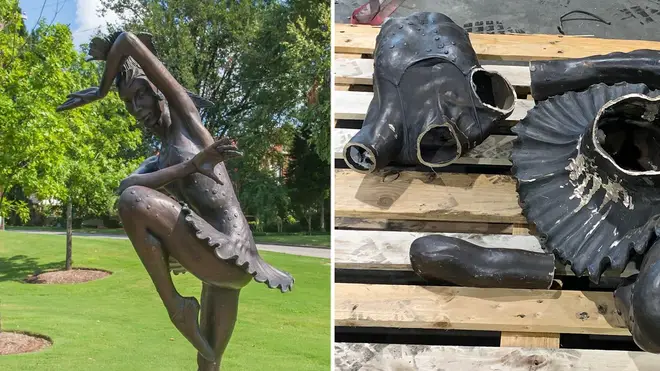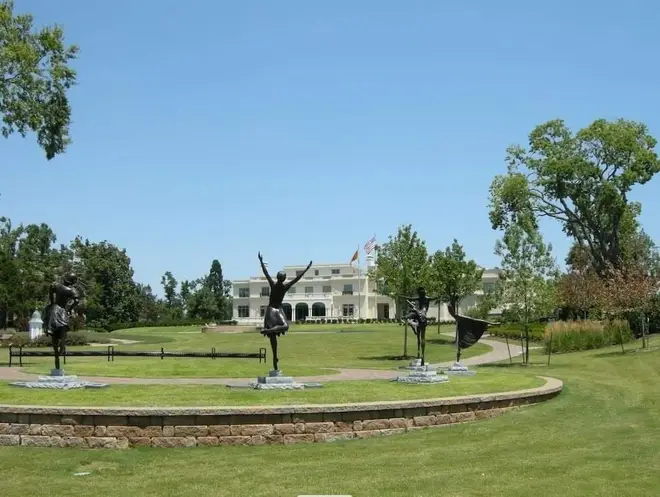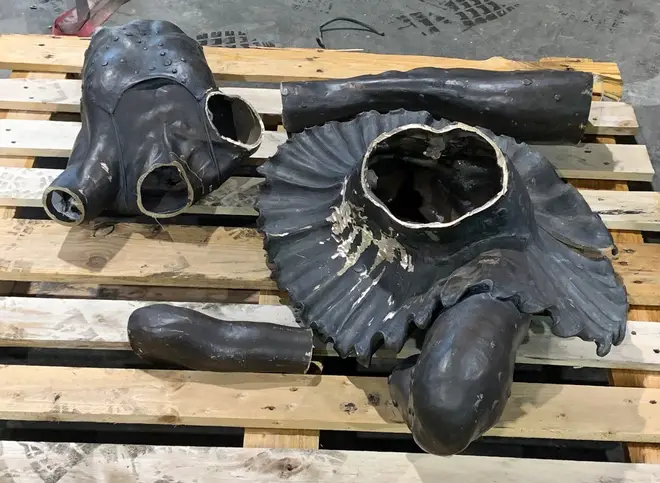Native American ballerina statue, destroyed and sold by thieves for $250, to be restored
12 May 2022, 12:36

Since the theft, Tulsa residents have raised $21,000 to restore the statue and increase security for the museum’s other treasured figurines.
Listen to this article
In Tulsa, Oklahoma two weeks ago, a bronze statue of a Native American ballerina was cut from its base, and the broken pieces sold to a recycling centre for $250.
The chopped-up statue once depicted leading dancer Marjorie Tallchief, the first Native American to be named the leading dancer, also known as ‘première danseuse étoile’, by the Paris Opera Ballet.
Last week, the museum made a statement saying the statue “has been partially found, cut into pieces, at a recycling center. We are devastated but hopeful for apprehension and more answers to come”.
The museum asked the public to keep sending any information to the Tulsa Police, who added on Facebook that “an investigation is underway to find out who stole then vandalized the statue”.
Read more: Netflix places a statue of Mozart’s sister to celebrate history’s overshadowed women

The theft prompted an outcry among residents in the capital city, and a GoFundMe page on behalf of the Tulsa Historical Society has since raised $21,000 to replace the statue. Some of the money will also go towards extra security for other statues on the lawn outside the museum.
The beloved statue is among the museum’s ‘Five Moons’ – bronze statues of five of Oklahoma’s renowned Native American ballerinas, including Yvonne Chouteau, Rosella Hightower, Moscelyne Larkin and Marjorie’s sister, Maria Tallchief, who is considered the US’s first major prima ballerina.
Marjorie, best known in the 1940s and 50s, was also a member of the Native American tribe Osage Nation. Her statue belonged to the Tulsa Historical Society and Museum, and before last week had stood on the museum’s west lawn for 15 years.
The five statues were designed by two local artists, Monte England and Gary Henson, the latter of whom said sculpting the figures allowed him the “opportunity to express my own appreciation for ballet. It’s a way of looking at the human condition.
“Here are these five American Indian women who are able to do amazing things – to move in ways that most of us can only dream about – and who were able to succeed once they got their chance.”
Read more: This piano staircase social experiment revealed how music makes everything better

When the statues were revealed in 2019, the then-director of the Tulsa Historical Society, Sharon Terry, said: “These women made such an extraordinary impact on history.”
“It’s been said many times before but it’s still just as true – the world of ballet was exclusively European until these five Indian women, all from small Oklahoma towns, came along. They truly made a place for Americans in the world of ballet,” she added.
On Tuesday, the museum revealed Henson had agreed to replace the statue and reunite the Five Moons. While some pieces are still missing, Henson said he believes that over the next 12 to 18 months, he can “use the existing pieces and recreate the missing ones to bring Marjorie back in all her glory”, according to the museum.
“I can do this!” he said.


































